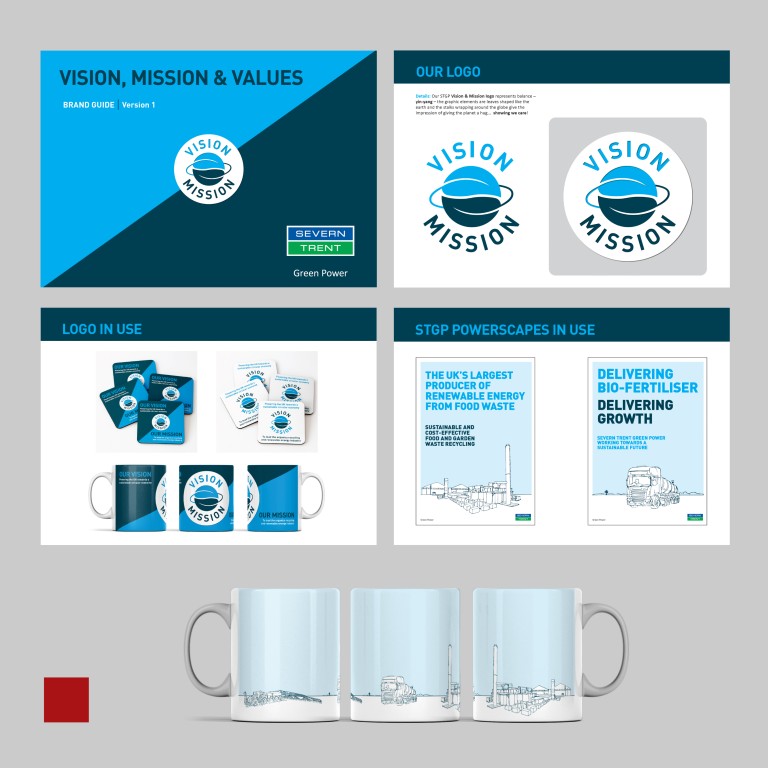
Earlier this year we were commissioned by Severn Trent Green Power to develop a brand identity for their company Vision, Mission and Values. The brief was clear if not detailed, create something visually striking but simple! The brand and the guidelines are Severn Trent Green Power's way of sharing what their company Vision, Mission and Values are – “they make us who we are and we will express them throughout our interaction with our colleagues and our customers.”
Many of you who know me understand that I'm not one for using flowery descriptions about our brand work but we do consider and put a lot of thought into it! For instance the initial stages of the logo development for Severn Trent Green Power took into consideration these factors;
• an initial idea of “yin-yang” - balance - the icon is created from leaves, though not obviously.
• use of the blue secondary brand colours takes it away from the obvious ‘green’ graphics that many companies use to signify ‘eco’.
• the stalks wrap around the shape to give the impression of completing the circle - movement - giving a hug - caring!
As part of the identity, as well as the main logo, we created a series of line drawings that visually represented the core areas of their business. These line drawings can be used individually or combined to create many design variations for marketing and promotion purposes.
A company's vision and values are not just words on a wall or a website; they are the guiding principles that shape its identity and culture. When developing a company's vision and value statement, brand design plays a pivotal role in communicating the core essence of the organisation. Below we look at the benefits and reasoning behind using brand design in this process.
Visual Identity Speaks Volumes: Your brand's visual identity, including the logo, colour scheme, typography, and design elements, is often the first interaction potential customers have with your company. A well-designed brand immediately conveys professionalism and a sense of purpose. It tells people that you take your business seriously, and this makes a lasting impression.
Consistency and Recognition: A strong brand design provides a consistent visual thread that runs through all your company's communications. This consistency helps in building recognition. When customers see your branding across different platforms, they begin to associate it with your values and vision. This visual recognition aids in building trust and loyalty.
Alignment with Values: Your brand design should reflect your company's core values. The colours, imagery, and overall aesthetics should align with what your business stands for and reflect your company's main identity. This alignment sends a clear message about your values to your audience.
Differentiation: In a crowded market, a unique and well-thought-out brand design sets you apart from the competition. It helps you create a distinctive identity that appeals to your target audience. Think about some of the most successful brands in the world; their designs are instantly recognisable, and this sets them apart from the rest.
In conclusion, brand design is not just about creating a pretty logo; it's a fundamental element in shaping a company's vision and values. It is the visual manifestation of what your company represents, and it plays a critical role in communicating your purpose to your audience. The benefits of effective brand design are far-reaching, from creating a distinctive identity to building trust, loyalty, and an emotional connection with your customers. In today's competitive business world, investing in brand design when developing your company's vision and values is not just a good idea; it's a strategic imperative. So, don't underestimate the power of design in telling your company's story and differentiating yourself in the marketplace.